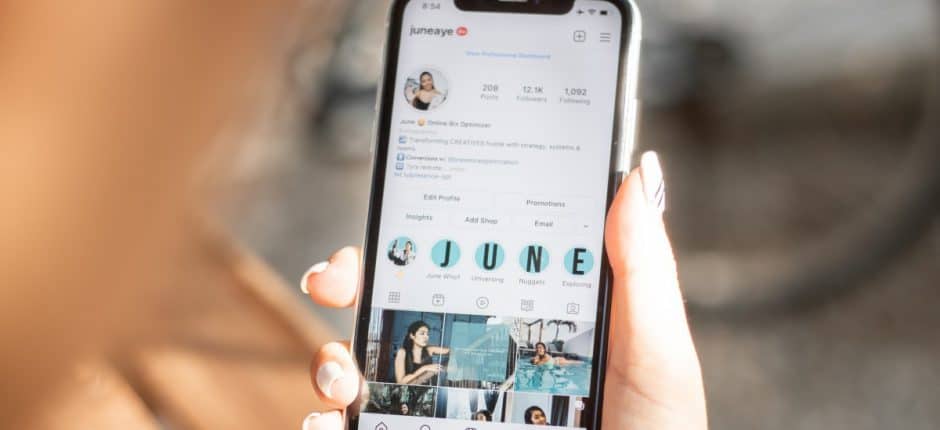Collaborative marketing has always been a valuable tool for brands—and in our digital world, it’s easier than ever. Whether you’re a small business or a global organization, you can leverage this tool to reach larger audiences and drive sales and leads.
Remember when Taylor Swift invited her famous friends along to make the Bad Blood video? That song became an instant hit and generated 20.1 million views on its first day of release.
That is the perfect example of collaborative marketing and it’s especially valuable on social media. With most brands now active and engaged on many platforms, it’s easier than ever to connect with parallel brands for a mutually beneficial collaboration.
The good news is, if you want to give this a try, you have a lot of options. Here are ten collaborative marketing ideas that will boost your social media presence along with some examples to inspire your campaigns.
Boost Your Confidence (And Success!) With Coaching
1. Collaborate on Giveaways
Giveaways increase brand awareness, boost sales, and inspire customer loyalty. Make your next giveaway more effective by doing it as a cross-branding campaign. The goal is to connect with the brand offering complementary products. In the end, the winner gets a valuable prize pack filled with products and services from multiple brands they love.
For instance, Bella Box and INMO Cosmetics hosted a collaborative Instagram giveaway to create an exclusive co-branded prize for their followers. They set some basic rules—tag someone in the comments, follow both brands and save and like the post—to win more than $500 in products.
This generated nearly 450 likes for Bella Box along with almost 100 comments of followers tagging someone who is new to the brand or may want to enter.
2. Collaborate With “Competitors”
User-oriented brands listen to their audience and design their services and products accordingly. They even collaborate with their direct competitors or brands “outside their league” to drive customer engagement.
H&M collaborates with luxury brands, such as Moschino, Versace, Giambattista Valli, or Simone Rocha. In this way, H&M makes high-fashion available to the average consumer, helping their partners reach more customers while getting the same in return.
H&M uses its Instagram channel to announce collaborations with big fashion brands, which always generates attention and triggers urgency for followers to take advantage of the collaboration. The most popular items are often sold out immediately after the collection launch.
This type of campaign also generated extensive media reach, beyond social media. Major publications including Glamour, Stylecaster, and Vogue reporting on the collaboration.
3. Feature Social Media Account Takeovers
Social media takeovers are an increasingly popular influencer marketing strategy. A social media celebrity takes over your company’s account and publishes content, usually to your stories for the day, on your behalf.
Takeovers increase user engagement, brand reach, and brand affinity because they associate your brand with a trusted personality in your industry.
They happen for a fixed timeframe, most often a day or week at the most, giving shared value to both you, as the brand hosting the takeover and the influencer who’s doing it. For example, Red Bull teamed up with Teddy Morellec, who took photos at #RedBullBowlRippers. The photographer took over the brand’s account to publish images. He also promoted the Instagram takeover via his account, using brand hashtags, expanding Red Bull’s reach.
4. Team Up With Influencers to Promote a Product Launch
Influencer collaborations are a perfect opportunity to promote a new product launch on social media. The influencer’s task is to introduce your new product to wider audiences, share the latest updates, and reward customers that convert.
The key to making this marketing collaborative marketing idea work is choosing the right influencers. They need to be ankle to represent your brand authentically because consumers can spot inauthentic content from a mile away.
To do so, make sure you have clear guidelines before making a choice. Know who the right person is for the job—which may not always be the one with 50K followers.
5. Create Brand Ambassador Programs
Once they build and nurture strong relationships with influencers, many brands ask them to become their brand ambassadors.
Brand ambassadors are highly reputable individuals that use your brand’s products and promote them online. They have an ongoing relationship with your brand, working collaboratively to promote your new products, share fresh content, and attend brand events.
The best part is they may not cost as much money to work with as an influencer—and often already love and promote your brand. Follow the lead of American Eagle on this one, a brand that’s been able to amass hundreds of brand ambassadors on Instagram. But don’t stop with the product launch—create a branded hashtag that both you and they can use and make sure to reshare their posts to get the benefit of user-generated content.
6. Build Sponsored Social Media Posts Into Campaigns
Sponsored content on social media is often marked as a #paid partnership. This is often done in conjunction with influencer collaborations. When coming from trustworthy influencers, sponsored content can boost brand awareness and maximize sales without hurting your trust or brand equity.
To increase the ROI of your sponsored social media campaigns, provide influencers with clear content guidelines and campaign objectives. It can also be valuable to set up multiple collaborations. For example, FedEx’s holiday campaign #HowTheHolidaysArrive features digital influencers, such as Brit and Co, Love Taza, Julia Engel, and Patrick Janelle. The brand met customers where they were looking for gift ideas—their favorite lifestyle bloggers’ and brands’ Instagram feeds. See a few examples:
7. Leverage User-Generated Content
User-generated content matters and is a great way to practice collaborative marketing. According to recent data from Stackla:
- 60 percent of consumers believe user-generated content is the most authentic and influential form of content.
- 86 percent find authenticity important when deciding what brands they like and support.
The easiest way to access user-generated content is through reviews and testimonials from customers. This may not seem like a typical “collaboration,” but like any other collaboration, the end product inspires customers to take action and buy from you.
AdVisible, an Australian digital agency, collects many digital marketing case studies on their website. But they didn’t stop there. They worked with a client to make a video case study for Instagram. Their post got 130+ views and now, anyone on their page will see this valuable collaboration and data, helping them create trust and expand their reach.
8. Start an Interview Series
When promoted strategically across social networks, interviews can increase your brand exposure and attract new audiences. By encouraging industry leaders to repost the content on their social feeds, you also increase brand reach with this simple collaborative marketing idea.
With most platforms now offering video and live streaming o[tions, you can host your interview series as an Instagram Live or Facebook Live series. You can also pre-record them and release them as regular feed videos.
One such example is VaynerMedia. They introduced the Marketing for the Now YouTube series. During Livestream YouTube interviews, Gary Vee speaks with well-known leaders, experts, and entrepreneurs.
In one particular episode, Gary speaks with multiple industry experts in one interview, which drew 41K views.
9. Leverage Guest Blogging
While the focus of guest blogging is often SEO, this collaborative marketing strategy can also maximize your social media reach and credibility. If the publishers and bloggers you work with have an extensive social following, they can broaden your social reach by promoting your collaborative content on their platforms.
Bring social media into your guest blogging guidelines and research analysis. Look for brands, publishers, and bloggers who have high website authority, in addition to a strong following and social media engagement.
Keep Reading: 5 Pillars of a Guest Blogging SEO Strategy
10. Co-Host a Twitter Chat
Twitter is still a popular social media platform that draws 206 million daily active users, as of the second quarter of 2021. The best way to build your community on Twitter is to participate in Twitter chats. Twitter chats are tracked by a single hashtag, like #contentchat and users share their insights, answer questions and connect with others on a single topic.
One way to get more from Twitter chats is to make them more collaborative by co-hosting a chat. The value in this is that you are promoted and featured as the co-host. This drives more followers and connections as you help lead the chat alongside the regular host.
All you need to do is reach out to the chat host and request to be a co-host. While not all chats allow this, many are open to the idea. Better yet, you don’t need thousands of followers to do it.
Find the Collaborative Marketing Ideas for Your Brand
Even though you may not have the budget of the brands mentioned above, you can harness the potential of collaborative marketing. For example, you can easily host a weekly interview series on Instagram Live, despite your following. Conversely, you can build a strong brand ambassador program with little to no budget if you have a product or service that people love. Use these ideas as inspiration to do what works for your brand and budget.



